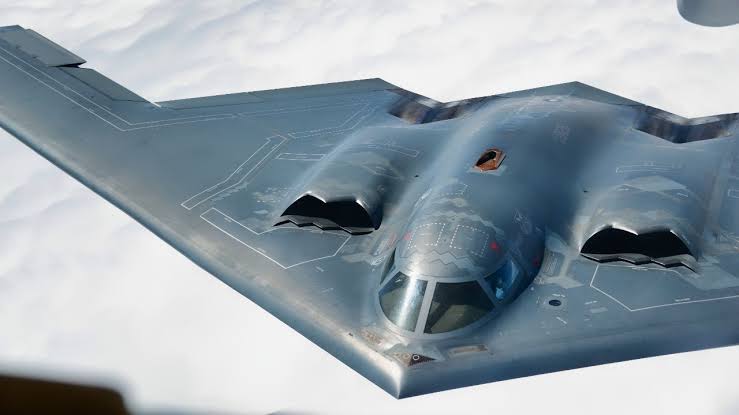
Late Saturday evening in Washington—early Sunday morning in Tehran—the order came down.
After nearly 18 hours in flight, B-2 stealth bombers, virtually undetectable by radar, began final preparations for a strike. They had departed Whiteman Air Force Base in Missouri and had refueled multiple times in the air. At the same time, U.S. Navy submarines—modified Ohio-class vessels armed with dozens of guided missiles—had positioned themselves in the Arabian Sea, ready to provide support.
The green light for the mission came directly from President Donald Trump, who in 2019 had famously reversed a strike on Iran just minutes before it was to begin. This time, there was no reversal.
With this bold move, Trump committed to what could be the most consequential military decision of his presidency—one that may shape how history remembers him.
If the mission succeeded, Iran’s nuclear ambitions could be set back significantly, to the relief of both Israel and many Sunni Arab states. But failure or miscalculation could spiral into a long and bloody conflict, with deep political and strategic costs for the United States and its allies.
Inside the White House Situation Room, where military leaders and key advisors gathered, the gravity of the moment was unmistakable. Notably absent was Director of National Intelligence Tulsi Gabbard, reportedly sidelined after questioning whether Iran was actively developing a nuclear bomb.
Speculation had been brewing when the B-2s were first spotted leaving U.S. airspace, with rumors suggesting they might be headed for Guam or Diego Garcia—both longstanding American strategic outposts. These suggestions, later confirmed to be intentional misinformation by Defense Secretary Pete Hegseth, were meant to obscure the bombers’ real target: Iran’s fortified nuclear sites.
Unlike previous strike considerations, which had focused on surface radar and missile installations, this mission was aimed squarely at hardened nuclear infrastructure—targets shielded by thick rock and deep underground bunkers.
General Michael Kurilla, head of U.S. Central Command, received the final order: proceed with Operation Midnight Hammer.
The stealth bombers, flying with near-complete radio silence, were supported by advanced U.S. fighter jets and surveillance planes, all operating in synchronized formation with minimal communication, according to Joint Chiefs Chairman Gen. Daniel Caine.
Shortly after 2 a.m. local time, they breached Iranian airspace. Fighters scouted ahead for threats. None were detected. The primary strike force targeted Fordow, a facility buried deep inside a mountain, while a secondary formation headed for Natanz.
American jets neutralized Iranian air defenses using suppression ordnance, and the bombers released their payload—dozens of massive bunker-busting bombs, each weighing 30,000 pounds, designed to penetrate hundreds of feet of rock before exploding.
Despite the sheer force of the attack, initial signs showed only limited surface damage at Fordow. But satellite imagery revealed telltale punctures in the hillside—evidence that bombs had struck precise weak points like tunnel entrances and air vents, increasing the odds that centrifuge halls deep underground were hit.
Each bomber had dropped two Massive Ordnance Penetrators, programmed to impact the same spot in sequence—a tactic intended to pierce deeper layers after the first explosion softened the ground. Israel had never attempted such a strike; its previous attacks had used much smaller munitions.
Experts remain divided on whether such deeply buried sites can be fully neutralized from the air. Rafael Grossi, head of the UN’s atomic agency, has described Fordow as one of the most secure and hidden nuclear sites in the world. Still, President Trump declared, “Fordow is gone.”
It remains uncertain whether Iran’s uranium stockpiles were destroyed. Iranian sources claimed that key materials and personnel had been moved in advance. U.S. intelligence detected convoys leaving the site in the days before the bombing.
Trump was also confident about damage inflicted on two additional locations: Natanz, where a lone B-2 bomber dropped more bunker-busters, and Isfahan, suspected of housing uranium near weapons-grade enrichment. Submarine-launched Tomahawk missiles followed, striking both sites shortly after the air raids.
Thanks in part to prior Israeli action, Iran’s air defenses never fired. The bombers exited Iranian skies without incident. According to Gen. Caine, Iran neither scrambled fighters nor launched surface-to-air missiles.
In total, the operation involved 125 American aircraft, including fighter escorts, refueling tankers, and surveillance units. Pentagon officials called the damage “severe,” while Trump described the nuclear infrastructure as “completely and totally obliterated.”
Following the strike, the president warned Tehran that any further aggression would be met with even harsher retaliation.
Vice President JD Vance offered a more measured assessment, suggesting that while Iran’s program had been significantly disrupted, it wasn’t necessarily dismantled.
Trump’s resolve has surprised even his critics. Though often hesitant in foreign affairs, his stance on Iran’s nuclear capability has been consistent for years: Tehran must not obtain the bomb.
Israeli Prime Minister Benjamin Netanyahu was a key advocate for military action and has claimed the attacks were fully coordinated with Israel.
There may also be a personal dimension to Trump’s choice. After surviving two assassination attempts last year, the president has spoken more openly of faith and divine purpose. He recently shared a letter from U.S. Ambassador to Israel Mike Huckabee, which described Trump’s survival as part of a larger spiritual plan.
In doing so, Trump may be aiming to dispel the mocking label “TACO”—“Trump Always Chickens Out”—once used by critics to characterize his indecisiveness on military action.
While many of his supporters hailed the mission as a major triumph, others warned of consequences. Iranian officials issued dark threats in response, with one MP advising U.S. authorities to prepare “mass orders of coffins.”
Back in Washington, Democrats expressed alarm. Senator Jack Read noted, “This was a huge gamble—and we don’t yet know if it will pay off.”
By Monday night, Iran’s parliament was reportedly considering closing the Strait of Hormuz, a strategic waterway through which 20% of global oil flows.
Across the Gulf, American forces—some 40,000 strong—braced for retaliation, and allies feared becoming targets.
Trump is wagering that any Iranian response can be absorbed or deterred, especially given the damage already inflicted on Iran’s missile infrastructure by recent Israeli operations.
Some observers speculate that Iran’s supreme leader, Ayatollah Ali Khamenei, may be forced to accept a diminished position—just as Ayatollah Khomeini did in 1988 when ending the Iran-Iraq war.
If that happens, Trump may claim a landmark achievement. But if Iran’s nuclear infrastructure proves more resilient than believed, the U.S. could find itself drawn into a protracted conflict with an enemy now more determined than ever to build the bomb it long denied seeking.







